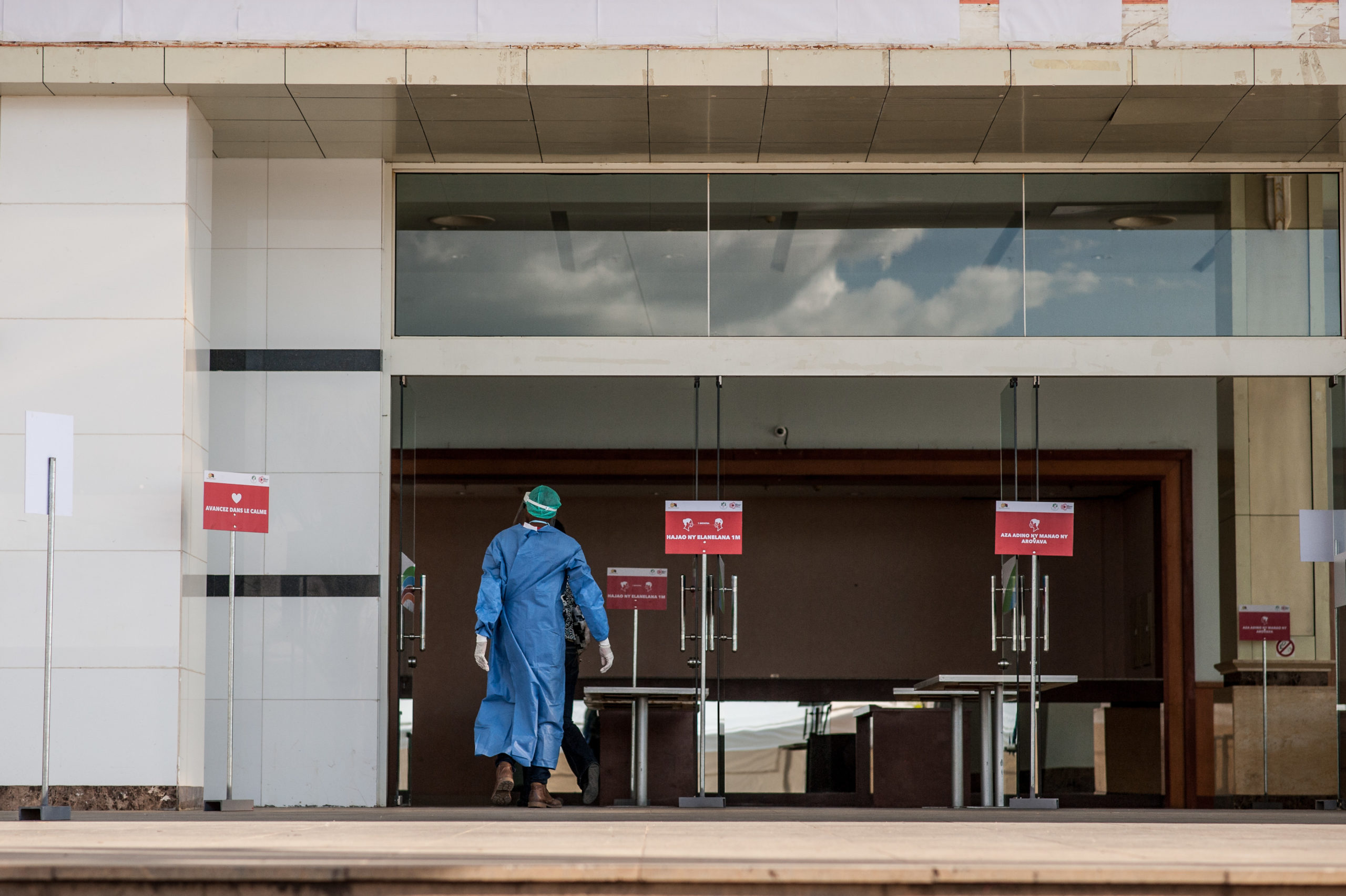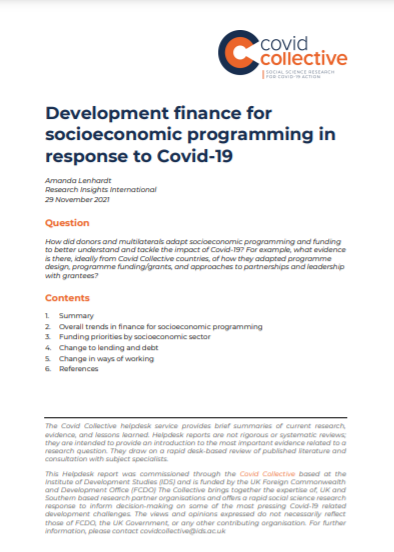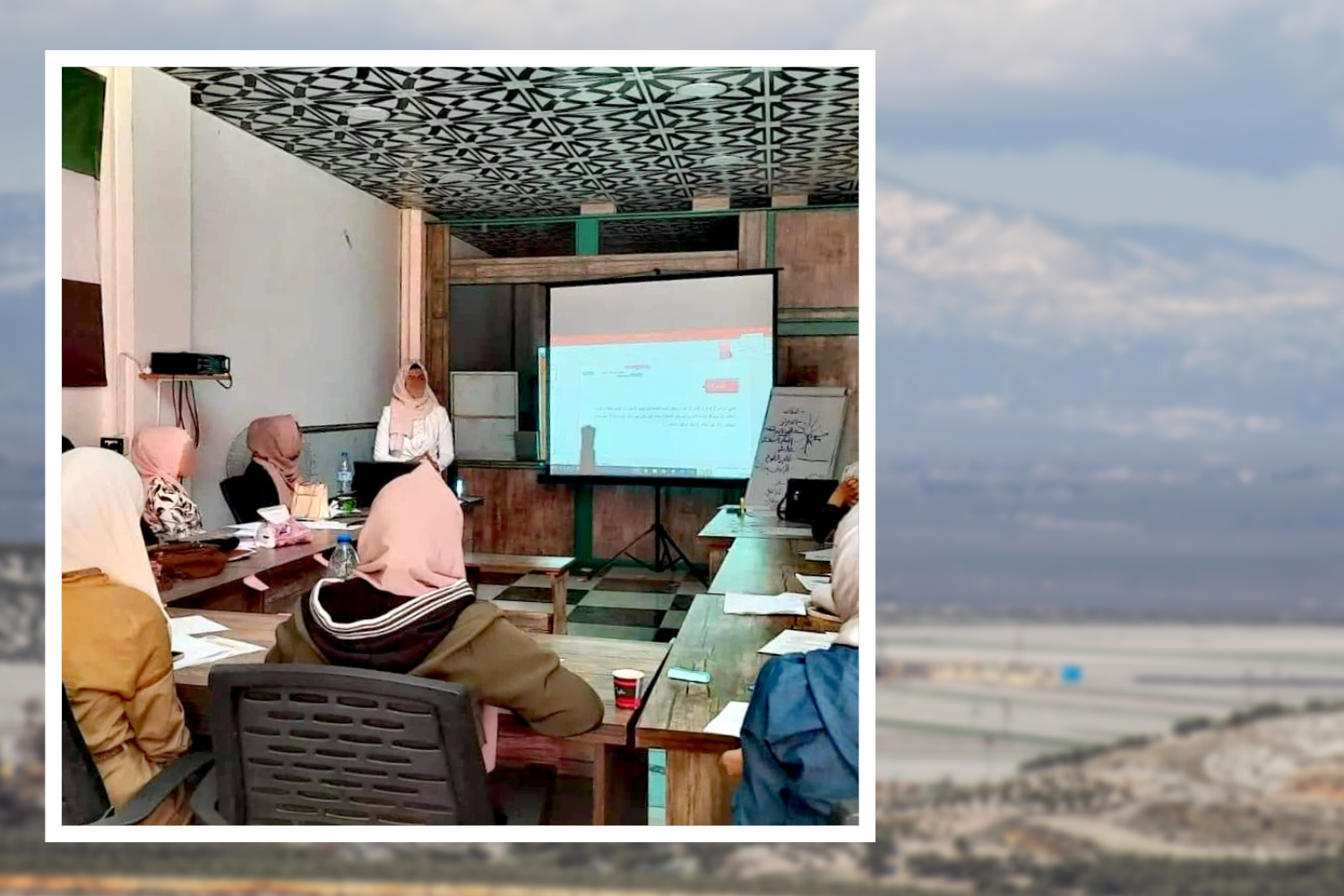The Covid-19 pandemic, among its many consequences, has led to major shifts in finance for development. National governments had to divert resources to immediate health responses and mitigate the economic and social impacts of the crisis on vulnerable households. Meanwhile, domestic spending envelopes have shrunk with economic contraction brought on by disruptions in movement, production, trade, and other key economic levers. Aid budgets on the whole did not see the dramatic drop that many feared, but aid has far from made up for losses in other areas of finance such as private investment, remittances and taxes.
With latest projections showing uneven recoveries around the world, namely higher income countries rebounding faster than lower and middle income countries, and the risk of an impending debt crisis in the latter, there’s an urgent need to re-examine the state of development finance. Bilateral and multilateral finance will be absolutely critical to, at the very least, avoid backtracking on progress made over the last few decades, but better yet to continue striving to meet the 2030 agenda. However, current indications suggest volumes and modalities of finance now in place are not fit for either purpose.
Other than the UK, the other top five bilateral aid donors either maintained or slightly increased their overall aid budgets in 2020. This was a positive outcome considering analyses of past global economic downturns showing aid spending is often one of the first things to be cut from donor’s national budgets. The priorities of this funding are difficult to pin down as donor reporting on actual spend remains highly inadequate, although there is some evidence that investments are being made in social and economic sectors at the heart of a comprehensive recovery strategy. On the other hand, the UN has secured the least funding for its socioeconomic response by comparison to immediate health and humanitarian responses. Investments in these and other cross-cutting sectors (i.e. climate change, institutional reform, and social norm changes) are needed to support communities to sustainably move forwards beyond the present crisis.
Read the Covid Collective helpdesk paper on development finance for socioeconomic programming in response to Covid-19
This report gives a broad overview of trends in bilateral, multilateral, and private foundations’ funding strategies over the course of the pandemic to highlight observable shifts in practice.
The review is based on a rapid search of funding announcements from a selection of bilateral donors, a selection of multilateral institutions, and overall trends reported by foundations.
Multilateral aid projects grew significantly in 2020, particularly from the World Bank which saw a 35% increase in projects approved over 2019. Yet there are many caveats to this increase. One year on from the announcement of these commitments, it was estimated that only 60% would be disbursed by the deadline. The volume of financial support has also been brought into question, far from meeting the GDP decline of 6% in low-income countries and 10% in lower-middle income countries. There are also concerns that donors have front-loaded their resources and that funding could drop sharply in the forthcoming period as the crisis continues.
Perhaps the most concerning trend in finance for development in the medium to longer-term is the gradual shift from grants to loans that has been mounting for some time. The latest round of large loans to low- and middle-income countries in response to Covid-19 has many observers concerned about an impending debt crisis. A recent report from Pathfinders warns that “increased spending to protect populations from Covid-19 means already indebted countries face debt level not seen for fifty years”, estimating that 100 countries will have to reduce budget deficits in the face of debt distress while continuing to combat the pandemic. In March 2020, G20 countries agreed to defer debt payments until the end of 2021 through the World Bank’s Debt Service Suspension Initiative (DSSI), however this relief does not apply to private lenders or payments to the World Bank itself which means only 41% of debt payments quality for relief.
Despite these worrying trends, there are some positive shifts in development finance to consider. Some donors appear to be adapting ways of working with recipients to address bottlenecks in getting resources where they’re needed in an efficient and effective way. The Swedish International Development Cooperation Agency (Sida), for example, used its ‘rapid response mechanism’ early in the pandemic, which allows small amounts of funding to be released within 24 hours of a crisis. The UK Government announced it would be allocating “significant funding directly to international charities and UK-based charities to play their crucial role to support vulnerable communities” and that “much of this will be spent by local partners”. Foundations seem to have taken on board lessons learned from the Covid-19 crisis to improve their funding modalities, with 805 organisations pledging to loosen restrictions on grants, accelerate payment schedules, reduce reporting burdens, and more effectively communicate and listen to community partners. It remains to be seen whether funding bottlenecks will be resolved in the short-term, although inefficiencies in aid disbursement mechanisms are generating interest and debate across different levels of the aid system.
We know that significant finance will be needed to mitigate the worst impacts of the crisis on vulnerable communities and to prevent others from backsliding into poverty and instability. Raising these funds won’t be easy – but bilateral donors should be aware that popular support for aid among the top 5 donors has been high in recent years (66% in the UK, 66% in the U.S., 58% in Japan , and 67% in Germany and 55% France supporting increasing aid) and there are likely to be lessons learned from countries where support is particularly high (in Spain 83% approve of an increase and 74% of Canadians want the country to either play a leading role or at least match contributions of other countries). Beyond increasing aid funds, there’s clearly a need to direct these funds efficiently and effectively and to sectors that promote sustainable and inclusive development. The current crisis may indeed present an opportunity for donors across the system to revise their strategies to avoid falling back on the old way of doing things and to reshape development finance to meet the needs of a post-Covid world using the best evidence available.




